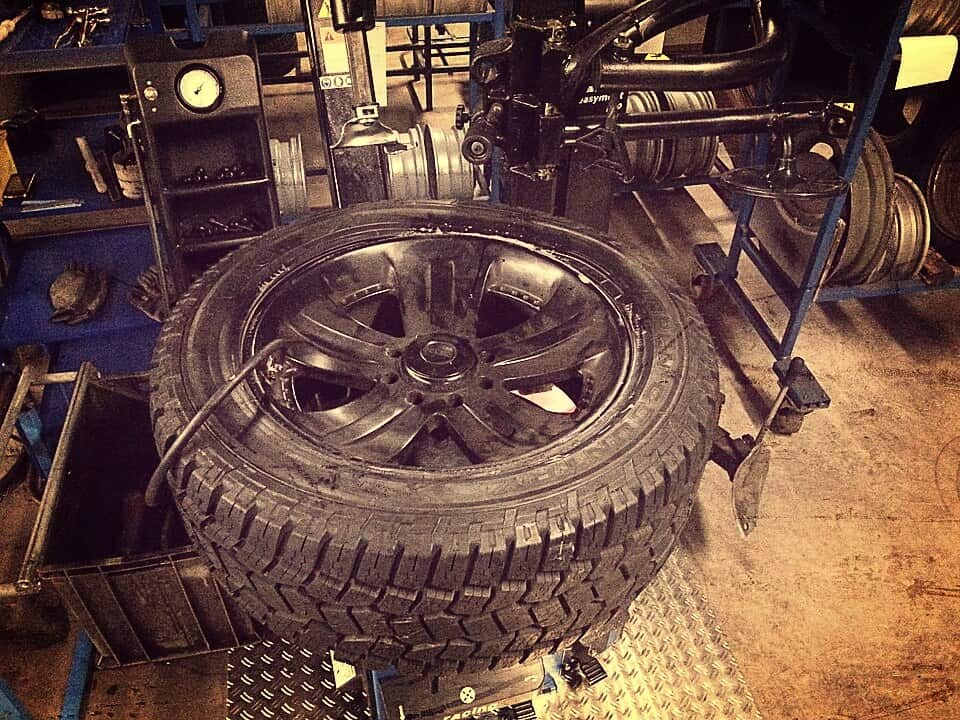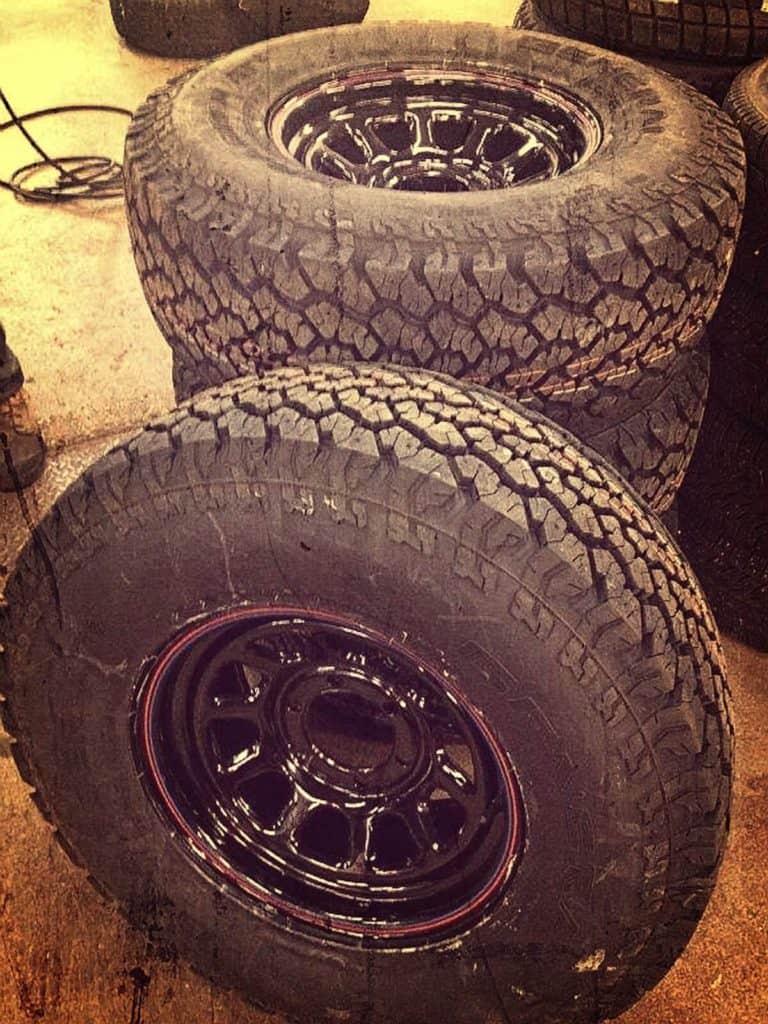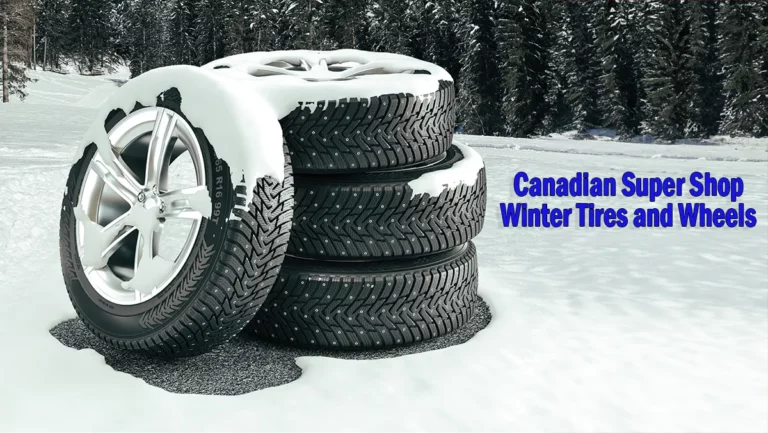Why All-Season Tires May Not Be The Best For Winnipeg’s Winter

Winnipeg’s winter is a force to be reckoned with, bringing with it biting cold, deep snow, and slick ice. It’s a season that doesn’t just whisper, but roars its presence. Many believe that their all-season tires can take on this wintry titan. However, are they truly up for the challenge? While all-season tires are designed for a range of conditions, Winnipeg’s fierce winter might be an opponent out of their league. Before you find yourself sliding on an icy road or trapped in a snowdrift, let’s find out why all-season tires may not be the best choice for Winnipeg’s notorious winter.
The Nature of All-Season Tires
All-season tires, as the name suggests, are designed to provide adequate performance across a broad spectrum of conditions. Structurally, these tires incorporate a hybrid tread pattern, which combines features of both summer and winter tires. This design aims to offer good traction on wet and dry roads while providing some capability in light snow conditions. The rubber compound used in all-season tires is formulated to remain flexible in moderate temperature ranges, ensuring consistent handling from spring to fall. However, they aren’t specialized for extreme conditions. While they can handle a variety of scenarios, they don’t excel in any particular one, especially when it comes to severe winter or high-performance summer conditions. In essence, all-season tires are the jack-of-all-trades of the tire world, engineered for versatility, but with certain inherent limitations in extreme situations.
Understanding Winnipeg’s Winter
Winnipeg’s winter is a stark testament to nature’s extremes, where biting cold intertwines with relentless snowfall and treacherous ice. Grasping the intricacies of this season is paramount, especially when considering how it impacts daily commutes, road safety, and our choices in vehicular equipment.
Temperature Impact on Roads
Winnipeg is renowned for its chilling winter conditions. Average temperatures frequently drop well below freezing, creating complex road conditions. Such cold can make roads rigid, impacting traction in wet and changing the way tires like Bridgestone or Goodyear Assurance interact with the surface. It’s essential to understand how different tire sizes and types, such as all-weather tires or season tires, perform under these conditions.
Snowfall Patterns
The frequency and intensity of snowfall in Winnipeg can challenge even the best of tires Canada offers. Trucks and SUVs may have a slight advantage due to their weight, but the right tire, with a specific tread design like Bridgestone or Goodyear, becomes paramount in snowy conditions. Long-lasting performance becomes crucial.
Challenges of Ice Formation
Ice is a hallmark of Winnipeg’s winters. All-weather tires or even Goodyear and Bridgestone tires designed for year-round use can struggle with maintaining a vehicle’s wet and dry conditions grip. Ice reduces traction, making roads treacherous, especially without the correct tread design optimized for such weather conditions.
In summary, Winnipeg’s winter demands a thorough understanding of how various tires, from Michelin to Goodyear, react to the unique challenges posed by this season. The right choice can make a difference between a smooth ride and potential hazards.
Comparative Analysis
In the world of tires, the distinction between various types becomes most evident under winter conditions. As temperatures plummet and road surfaces transition from wet to icy and snowy, the design and composition of a tire can greatly influence its performance. A comparative analysis of all-season vs winter tires illuminates these differences, shedding light on the nuances of tread patterns, rubber compounds, and overall efficacy in challenging cold-weather scenarios.
Tread Patterns: All-season vs. Winter Tires
The distinction between all-season and winter tires is prominently visible in their tread designs. While all-season tires have a moderate tread depth and pattern to handle various conditions, winter tires feature deeper treads with unique patterns to expel snow and offer superior grip on icy surfaces.
Rubber Compound and Temperature Sensitivity
All-season tires utilize a compound that’s flexible across a range of temperatures but can harden in extreme cold, reducing traction. Winter tires, on the other hand, use a specialized rubber formulation that remains pliable in freezing conditions, ensuring consistent grip. A tire’s rubber compound plays a pivotal role in its performance.
Performance on Snow and Ice
When it comes to snow and ice, the superiority of winter tires becomes evident. Their specialized design and compound provide enhanced traction and handling, whereas all-season tires, though versatile, may struggle in severe winter conditions.
Economic Implications of Tire Choices in Winter Conditions
Selecting the wrong tire for winter conditions can lead to significant economic repercussions. Using ill-suited tires may result in accidents, leading to repair costs and potential insurance premium hikes. Furthermore, inappropriate tires can wear out faster, necessitating premature replacements. While the initial investment in winter-specific tires might seem hefty, the long-term savings, both in terms of reduced wear and avoided accident-related expenses, can be substantial. Making a well-informed tire choice, therefore, isn’t just about safety—it’s a financially prudent decision as well.
1. Why can’t I just use all-season tires year-round in Winnipeg?
While all-season tires are designed to handle a variety of conditions, they are not optimized for the extreme cold, ice, and heavy snowfall typical of Winnipeg’s winters. Winter-specific tires have a specialized tread pattern and rubber compound that remain flexible in very low temperatures, providing better traction and safety on icy and snowy roads
2. Is it worth the investment to switch between all-season and winter tires?
Absolutely. While there’s an initial cost in purchasing winter tires and possibly an additional set of wheels, the enhanced safety, reduced risk of accidents, and potential long-term savings from avoiding unnecessary wear on all-season tires make it a worthwhile investment. Furthermore, many insurance companies offer discounts to drivers using winter tires, further offsetting the cost.
3. How can I tell if a tire is genuinely winter-approved?
Look for the mountain and snowflake symbol on the tire’s sidewall. This symbol indicates that the tire meets specific snow traction performance requirements set by the industry and is suitable for severe snow conditions. Always consult with a reputable tire dealer for recommendations tailored to Winnipeg’s winter conditions.
Safety Considerations in Winter Conditions
Navigating the icy and snowy roads of winter demands more than just careful driving; the right tire plays a pivotal role in ensuring safety. One of the most crucial factors to consider is the braking distance. On icy or snowy surfaces, winter tires, designed with specialized tread patterns and rubber compounds, provide significantly shorter braking distances than their all-season counterparts. This reduced distance can mean the difference between a safe stop and a collision.
Beyond just braking, handling and control are also of paramount importance in wintry conditions. Winter tires offer improved traction, allowing for more precise steering and better overall vehicular control when the roads are slick or covered in snow. In situations where split-second reactions matter, the superior grip of winter tires can be life-saving.
Recommendations for Winnipeg’s Winter Roads
For residents of Winnipeg, where winter is particularly harsh, the advantages of winter-specific tires cannot be overstated. These tires are specifically designed to handle the challenges presented by icy, snowy conditions, ensuring optimal performance and safety. When selecting the right winter tire, it’s vital to:
1. Contact us here at Canadian Super Shop so we can provide insights tailored to Winnipeg’s conditions.
2. Check for the mountain and snowflake symbol, which indicates the tire meets specific snow traction performance requirements.
3. Consider the tire’s tread depth and pattern, ensuring they’re suitable for heavy snowfall areas.
Lastly, irrespective of the tire type, regular maintenance, including periodic checks for wear and proper inflation, remains critical. A well-maintained tire, especially in winter, contributes significantly to road safety.
Final thoughts about all-season tires
Winnipeg’s unforgiving winter landscape presents a compelling case for equipping vehicles with the best possible tires for the season. Relying solely on all-season tires, despite their versatility, can be a gamble in the city’s extreme winter conditions. Their inherent design limitations can compromise traction, handling, and overall safety when faced with deep snow and treacherous ice. As the cold months approach, it’s paramount for Winnipeg residents to prioritize safety by making informed tire choices. This not only involves investing in winter-specific tires but also engaging in safe driving practices. In the face of Winnipeg’s harsh winter, the right tire choice, coupled with responsible driving, can make all the difference between a season of secure commutes and potential hazards.











